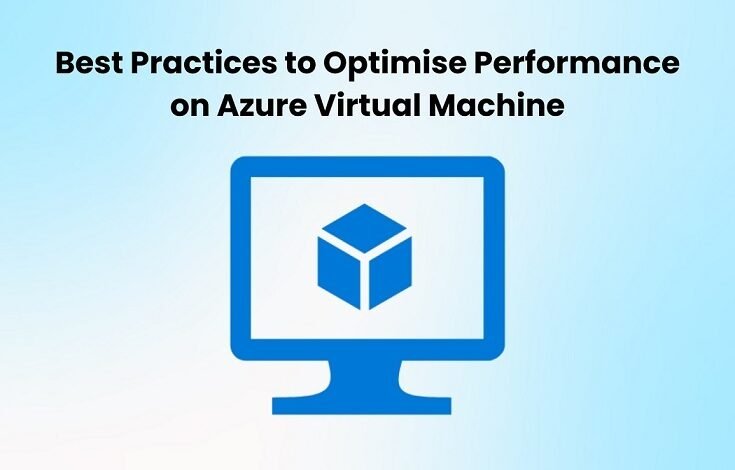Best Practices to Optimise Performance on Azure Virtual Machine

Microsoft Azure is a prominent cloud computing platform offering companies reliable services worldwide. One of its main products, the Azure Virtual Machine, is the foundation for many workloads and applications. Businesses depend increasingly on the cloud; thus, learning to optimise performance through Microsoft Azure Training Courses is essential to ensuring effectiveness and economy.
In this blog, we will examine the best techniques for optimising the performance of an Azure Virtual Machine, providing insights that go beyond the fundamentals.
Table of Contents
- What are Azure Virtual Machines?
- The Relevance of Microsoft Azure Training
- Right-sizing Instances
- Efficient Storage Strategies
- Networking Best Practices
- Utilising Accelerated Networking
- Monitoring and Diagnostics
- Azure Virtual Machine Optimisation in Action
- Scenario: High-Traffic E-commerce Website
- Conclusion
What are Azure Virtual Machines?
Before delving into optimisation tactics, let us quickly review the basics. Cloud computing resources that may be scaled up or down on demand are offered via Azure Virtual Machines (VMs). They can handle a variety of workloads and are adaptable, supporting both Linux and Windows operating systems. Azure VMs are flexible and agile for everything from web apps to sophisticated data analytics.
This platform also offers many other features, such as app reviews, QR code generator, app downloads, tutorials, news, and many more things related to various apps.
The Relevance of Microsoft Azure Training
Comprehending Azure foundations thoroughly is essential before diving into performance improvement. Training programs for Microsoft Azure equip people and groups with the know-how and abilities required to use the platform efficiently. By signing up for these courses, users can learn more about Azure virtual machines (VMs), their features, and the best deployment and management techniques.
Buy Instagram likes may promise instant gratification, but it’s a risky move. Purchased likes are often from bots or inactive accounts, damaging your credibility. Authentic engagement drives real growth. Focus on organic strategies to build a genuine audience and foster trust on Instagram.
Key Considerations for Azure Virtual Machine Optimisation
Right-sizing Instances
Choosing the right virtual machine (VM) size is the key to maximising performance and cost. Azure has several instance kinds, each designed to handle particular workloads. Analyse your application requirements in detail and select a virtual machine (VM) size that fits your performance requirements and financial restrictions.
Efficient Storage Strategies
Storage performance and Azure VM performance are strongly related. When working on workloads that require a lot of input/output, use premium storage solutions; for less demanding applications, think about ordinary storage. More improvements to storage efficiency can be made by implementing managed drives and optimising disk configurations.
Networking Best Practices
Networking is a critical factor in virtual machine performance. The Azure Virtual Network facilitates effective and safe communication between virtual machines. By implementing Azure Load Balancers and Application Gateways, you can efficiently distribute traffic and guarantee your apps’ best performance and dependability.
Utilising Accelerated Networking
Turn on Accelerated Networking to improve your virtual machines’ networking performance. This feature increases throughput and decreases latency by transferring network processing to specialised hardware. It’s an easy technique to improve overall virtual machine performance.
Monitoring and Diagnostics
Constant monitoring is necessary to find possible problems and performance bottlenecks. Azure offers powerful monitoring tools like Azure Log Analytics and Azure Monitor. By implementing efficient monitoring procedures, you may anticipate performance issues and adjust your virtual machines accordingly.
Azure Virtual Machine Optimization in Action
Consider a situation where a business uses Azure virtual machines to run a popular e-commerce website to demonstrate these best practices. The IT staff can get the necessary skills to successfully apply optimisation techniques by enrolling in Microsoft Azure training classes.
Scenario: High-Traffic E-commerce Website
Right-sizing Instances
The IT staff examines the website’s traffic patterns and resource needs. They selected a virtual machine (VM) that is the right size to manage peak demands effectively in light of the findings. This guarantees peak performance without using excessive amounts of resources.
Efficient Storage Strategies
The team chose managed disks and premium storage because they understand how crucial storage is for e-commerce platforms that rely on databases. They speed up user response times by configuring the storage system to meet the database’s high I/O demands.
Networking Best Practices
The IT team creates an Azure Virtual Network to connect the virtual machines safely and guarantee a flawless user experience. They minimise congestion and enhance overall website responsiveness by distributing incoming traffic evenly across several virtual machine instances, utilising Azure Load Balancers.
Utilising Accelerated Networking
Enabling Accelerated Networking is essential for the e-commerce website to lower network latency. This enhances the online purchasing experience by producing quicker page loads and a more responsive user interface.
Monitoring and Diagnostics
Implementing Azure Monitor and Log Analytics may allow the IT team to gain real-time website performance insights. By setting up alerts for important indicators, they may proactively handle possible problems before they affect the user experience.
Conclusion
Performance optimisation on Azure Virtual Machines is a continuous effort that requires a blend of tactical execution and strategic planning. Courses on Microsoft Azure are an excellent way for individuals and groups to learn more about Azure services, particularly Azure virtual machines.
In conclusion, enterprises can fully utilise Azure Virtual Machines by right-sizing instances, implementing effective storage strategies, following networking best practices, employing accelerated networking, and implementing robust monitoring and diagnostics. Your apps will function at their best and remain resilient and scalable in the face of future issues if you keep informed and adopt best practices as the cloud computing ecosystem changes.
Remember that becoming an expert in Azure VM optimisation means staying ahead of the game in a digital world where speed is everything. For more information visit: The Knowledge Academy.














